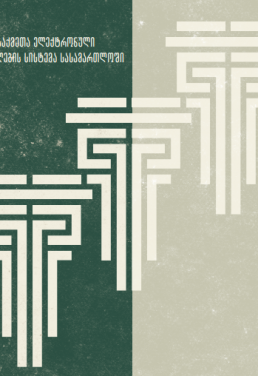The Human Rights Education and Monitoring (EMC) publishes a report - " Electronic System of Case Distribution in Courts." The report analyzes how the electronic distribution of cases works in practice, how comprehensive the rules of case distribution are, and what trends are shown by the statistical data in this regard. The document also discusses the shortcomings related to the rules of distribution of cases revealed in the first reporting period, for elimination of which no steps have been taken.
The presented report is second of its kind and covers the period from January 1, 2019 to December 31, 2019. In this light, the following key findings were identified:
- Compared to the first reporting period, the tendency of deterioration of the standard of access to public information on the operation of the case distribution system has been observed;
- The Chairperson of the Court is still empowered to define the composition of the court’s narrow specialization, which allows him/her to determine the circle of judges among whom the cases shall be distributed; The current regulation is also problematic as the chairperson is not obliged to substantiate the decision when determining the composition of specializations. Ultimately, the current legislation allows the chairperson to arbitrarily influence the distribution of cases by changing the composition of the specialization;
- The Chairperson of the court may modify the duty-schedules of the judges without any justification. Such unilateral decision-making authority increases the risks of applying the said measure for arbitrary interests;
- The Chairperson of the Court, the Deputy Chairperson or the Chairperson of the Panel/Chamber still retains the capacity to see the already assigned cases; The Chairperson of the Court may also increase/decrease the workload of judges; In that context, chairpersons are still perceived as superiors to judges.
- Considering that one of the main challenges of justice field is backlog/overwork of judges, the Chairpersons of the Court, the Deputy Chairpersons or the Chairpersons of the Panel/Chamber, as well as the members of the High Council of Justice, enjoy certain privileges, and are in a significantly advantageous position compared to other judges, as the Rule on the Electronic Distribution of Cases provides for a favorable workload for them. The workload of a judge is particularly reduced if they are concurrently a member of the Council and hold other administrative position;
- The Electronic Program of Case Distribution selects only one speaker judge from the panel of Appeals and Supreme Courts, and the procedure/rule for selecting the remaining judges is still unclear; It is not determined, as to how the remaining two judges shall be selected in a three-judge-panel;
- Procedure and timeframes for re-distribution of cases in case of self-recusal/recusal of a judge are not properly regulated; In particular, it is not clear what actions related to the distribution of the case are to be taken; The Chairperson’s involvement in the process of re-allocation in case of recusal of a judge, in accordance with the procedural law, remains problematic;
- The Case Distribution program still does not take into account the complexity and the volume of the case, which is essential for setting a fair and equal distribution of the workload to the judges;
- The lack of judges in some courts precludes the observance of the principle of random distribution of cases in these courts; For example, according to statistics, cases are not distributed in 34 municipalities in line with the principle of random distribution, as only one magistrate judge executes his/her judicial authority in the relevant municipality;
- Legal regulation concerning exemptions to the Rule on the Electronic Distribution of Cases is vague.
This report has been produced with the assistance of the European Union, under the project “Facilitating Implementation of Reforms in the Judiciary (FAIR)”.
The objective of the EU funded project is to support real reforms of the judicial system through monitoring, evidence-based advocacy, strengthening of individual judges and promotion of dialogue with them. The project also aims to increase the involvement of community groups in the reforms process of the judiciary through awareness raising and mobilization.

